Which of the following describes how a route is handled when is received at the PE from the local CE?
An advantage of using BGP as the PE-CE protocol is that route policies are no longer required to control the exchange of routes from BGP to MP-BGP.
Which of the following commands on an Nokia 7750 SR will verify connectivity for a VPRN service

Complete the following statement. In a VPRN, the label signaled by RSVP-TE is used to ______________.
Which of the following is NOT a viable option when implementing inter-AS VPRN?
An SDP has been configured for a VPRN service using an existing MPLS LSP and the configuration shown below. Which of the statements below is true about the configuration on an Nokia 7750 SR?
In a traditional layer 3 VPN which of the following will be an issue when there is overlapping address space between two customers? Choose the best answer.
Click the exhibit.

A Carrier Supporting Carrier (CSC) VPRN is configured for a customer carrier who is an Internet Service Provider (ISP). Which route is NOT present in PE1's global routing table?
Assuming that as-override has been used, which of the following statements describes the most likely location of prefix 10.1.2.0/24, based on the output from an Nokia 7750 SR shown below?
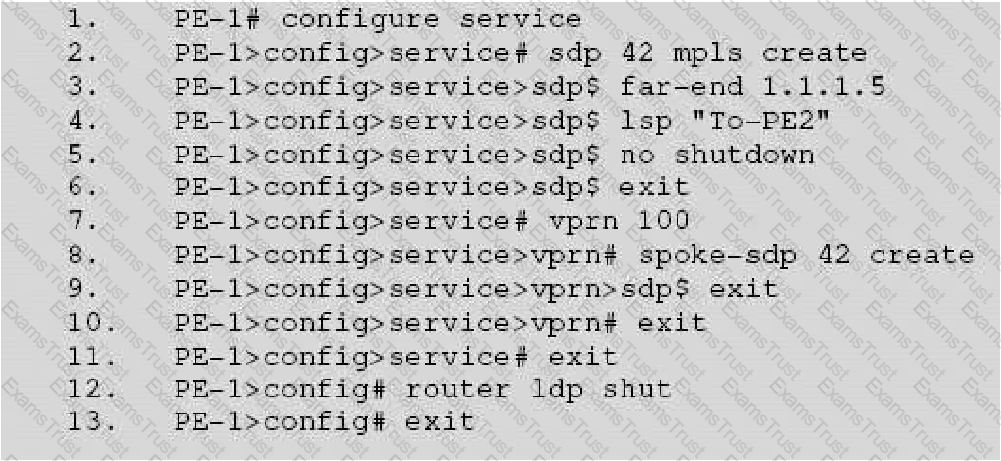
Click the exhibit.

A Carrier Supporting Carrier (CSC) VPRN is configured for a customer carrier who is a BGP/MPLS service provider. If CE1 sends an IP packet to 192.168.200.1, which of the following is FALSE?
Which of the following about inter-AS model AVPRN is TRUE?
Click the exhibit.
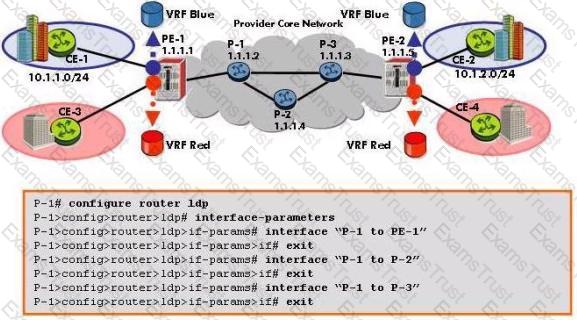
An Nokia 7750 SR is to be configured as a core router that supports VPRNs using LDP as the transport protocol. Which of the following best describes this configuration?
Which of the following best describes the goal of an Extranet VPRN?
Which of the following about the configuration of VPRN Outbound Route Filtering (ORB on an Nokia 7750 SR is TRUE?
What are the two main benefits of a hub and spoke VPRN design? (Choose two)
Click the exhibit.
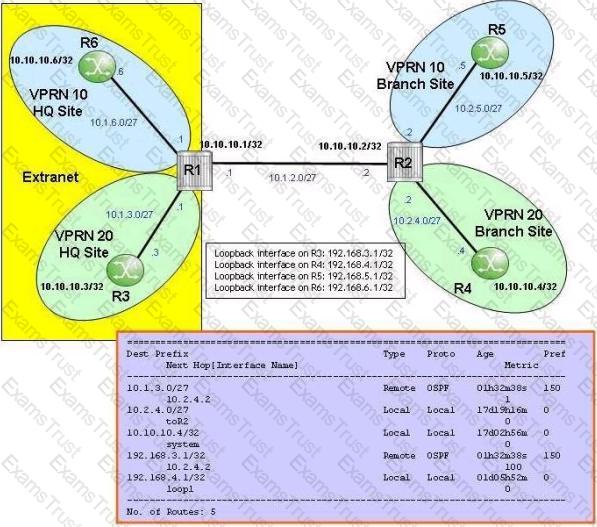
Router R4 is an Nokia 7750 SR configured for the extranet VPRN network. Which CLI command is executed on router R4 to produce the displayed output?
Which of the following about the configuration of an inter-AS model C VPRN is FALSE?
What operation does a P device perform when it receives a labeled packet for a VPRN service?
Click the exhibit.

For the inter-AS model B VPRN, which of the following is the correct BGP configuration on ASBR1?
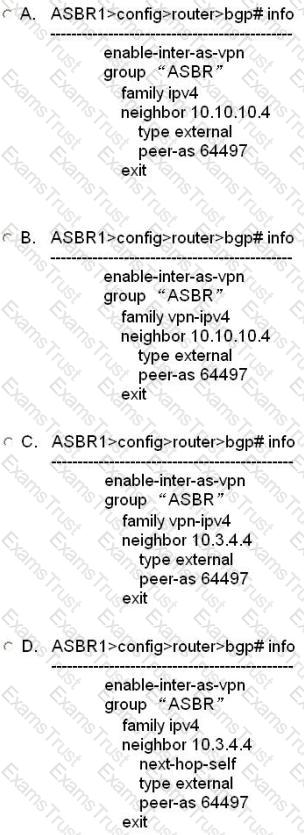
In a Carrier Supporting Carrier (CSC) VPRN, which of the following is NOT a benefit to the network provider?
Click the exhibit.
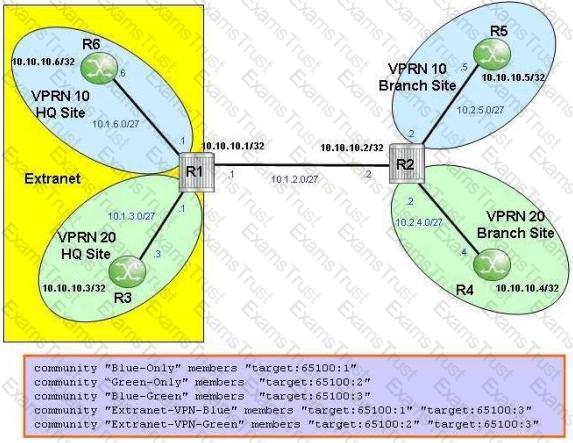
The headquarter sites of VPRN 10 and VPRN 20 ate part of an extranet VPRN. Which of the following communities are included in the export policy applied to VPRN 10 on router R1?
Which of the following about VPRN Outbound Route Filtering (ORF) is FALSE?
Click the exhibit.
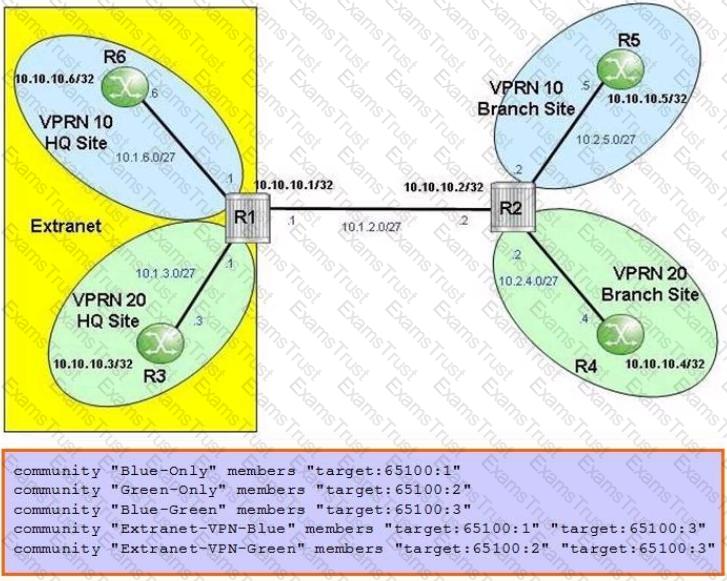
For the extranet VPRN and community lists shown, which of the following communities will be included in the export policy applied to VPRN 20 on router R2?
Click the exhibit.
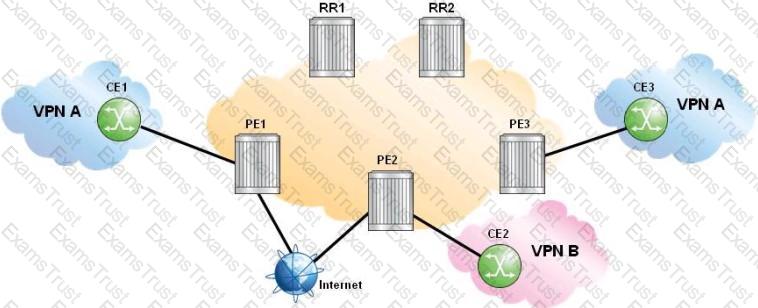
All sites in the displayed network require Internet access. Route reflector 1(RR1) is used for Internet routes only and route reflector 2(RR2) is used for VPN routes only. Which of the following is FALSE?
When using the AS-override method to prevent BGP loops in VPRNs, where should the "as-override" CLI command be configured?
Which of the following about the Route Target is TRUE?
When VPRN Outbound Route Filtering (ORF) is enabled, each PE sends its ORF list to its peer using which of the following BGP message types?
Click the exhibit.
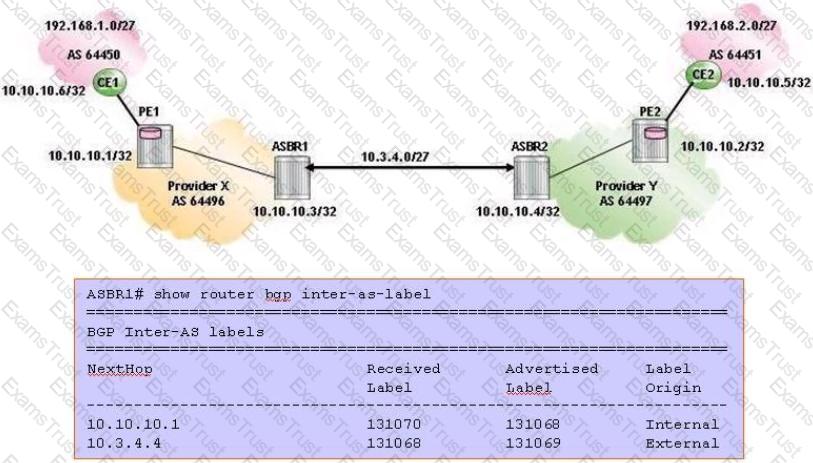
For the Inter-AS model B VPRN, which of the following about the inter-as-label output on ASBR1 is TRUE?
Click the exhibit.
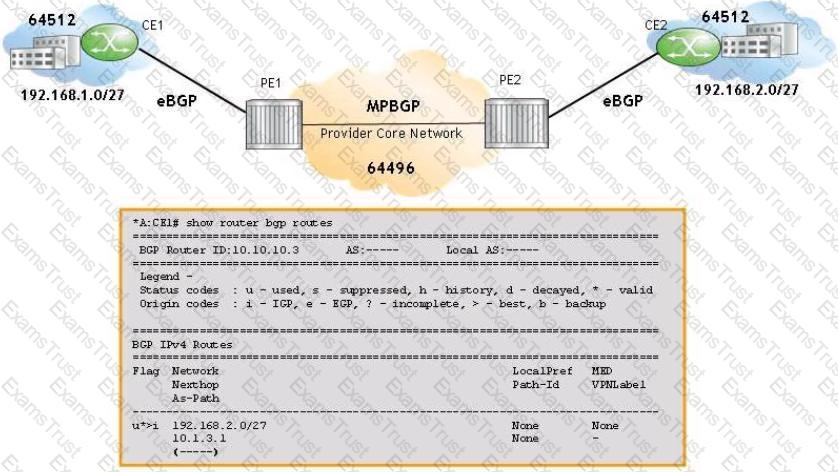
The CLI command "remove-private" is configured on PE1 to eliminate BGP loops in the VPRN. For the displayed route, what is the value of the AS-Path field?
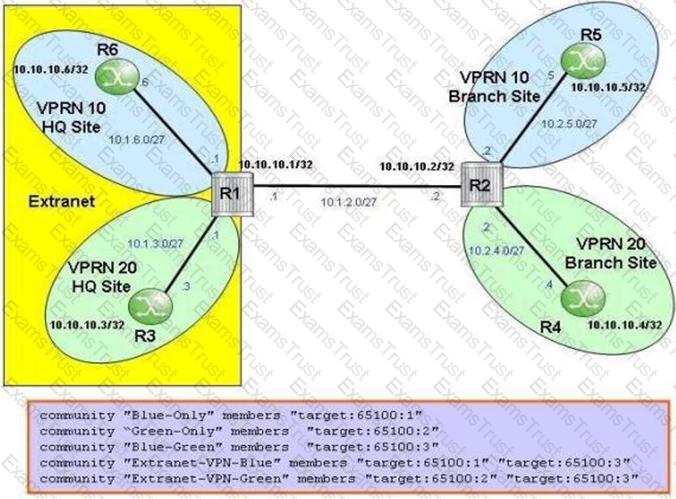
The headquarter sites of VPRN 10 and VPRN 20 are part of an extranet VPRN. Which route target(s) should be imported under the VPRN 10 service on router R1?
Click the exhibit.

A Carrier Supporting Carrier (CSC) VPRN is configured for a customer carrier who is an Internet Service Provider (ISP). Which of the following about route distribution is FALSE?
Click the exhibit.

Routers RR1 and RR2 are configured as route reflectors. For the inter-AS model C VPRN, which of the following about the BGP sessions established between the routers is TRUE?